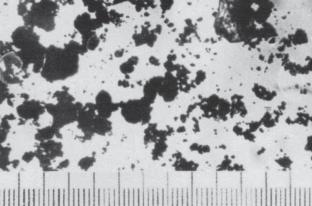Phase Composition of Interstitial Clay and Gas Emissions on Heat Treatment
IF 0.4
Q4 ENGINEERING, CHEMICAL
引用次数: 0
Abstract
When interstitial clay, which is the waste from shale combustion, is fired at 250°C, the decomposition of organic matter results in the emission of H2, CO, SO3, and CO2 from the ceramic samples. At 350–550°C, the content of oxidant (oxygen) and neutral gas (nitrogen) is markedly less. At 550–750°C, no sharp decrease in their content is observed. At 750–1000°C, the decrease is slight. At 1000°C, mainly CO is formed. At 1050°C, the fired sample contains practically no organic compounds. More complex compounds (anorthite, diopside) are formed, with increase in the mechanical strength.

间隙粘土的物相组成及热处理过程中的气体排放
当页岩燃烧产生的废粘土在250℃下烧制时,有机质的分解导致陶瓷样品中释放出H2、CO、SO3和CO2。在350-550℃时,氧化剂(氧)和中性气体(氮)的含量明显减少。在550-750℃时,它们的含量没有急剧下降。在750 ~ 1000℃时,下降幅度不大。在1000℃时,主要形成CO。在1050°C时,烧制的样品几乎不含有机化合物。随着机械强度的增加,形成更复杂的化合物(钙长石,透辉石)。
本文章由计算机程序翻译,如有差异,请以英文原文为准。
求助全文
约1分钟内获得全文
求助全文
来源期刊

Coke and Chemistry
ENGINEERING, CHEMICAL-
CiteScore
0.70
自引率
50.00%
发文量
36
期刊介绍:
The journal publishes scientific developments and applications in the field of coal beneficiation and preparation for coking, coking processes, design of coking ovens and equipment, by-product recovery, automation of technological processes, ecology and economics. It also presents indispensable information on the scientific events devoted to thermal rectification, use of smokeless coal as an energy source, and manufacture of different liquid and solid chemical products.
 求助内容:
求助内容: 应助结果提醒方式:
应助结果提醒方式:


